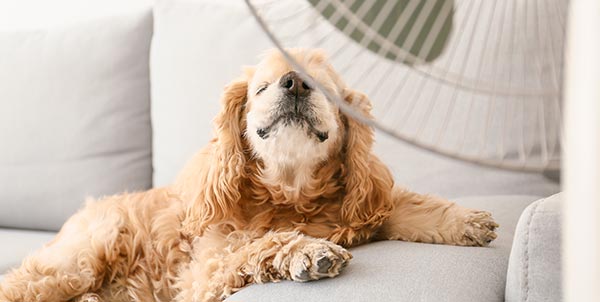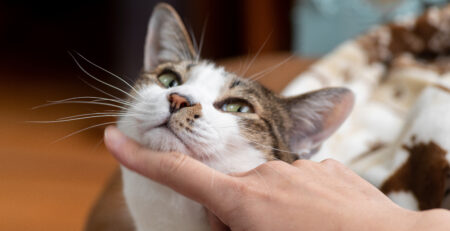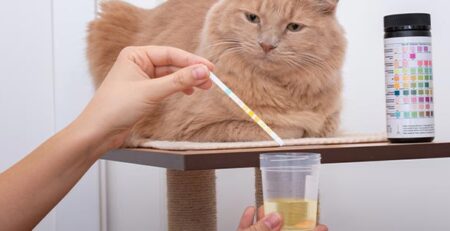Table of Contents
Pets in summer, fierce heat and heat stroke: how to protect dogs, cats and all other household pets from hyperthermia?
Heat stroke, also called hyperthermia, is a rise in a dog or cat’s body temperature.
The normal body temperature of a dog or cat ranges from 38°C to 39°: when exposed to high environmental temperatures and in view of their inability to dissipate heat by sweating, the temperature can rise to over 40°C, and the consequences of heat stroke could be fatal.
How does the dog dissipate heat
Dogs dissipate heat by panting, that is, by increasing their breathing rate.
This mechanism may not be sufficient to cool the body, and as the internal temperature rises, the dog suffering from hyperthermia becomes increasingly restless and manifests increasing discomfort.
The risk is that he will go into
coma
and unless he receives immediate medical care, even die.
For this reason, it is vital to monitor the condition of household pets, ensuring optimal conditions for them so that they do not suffer from the heat and fall victim to heat stroke.
Symptoms that herald heat stroke
Restlessness, yelps and barks
for no apparent reason may already represent a ‘red flag.
Progressively, the dog also accelerates its respiratory rate, and hypersalivation causes foamy drool to be emitted from the mouth.
Breathing becomes increasingly labored and heart rate also increases.
Vomiting and diarrhea may also occur, and again, seizures, tremors, lack of coordination.
The initial state of agitation ceases and the dog becomes lethargic and apathetic: at this point it is at risk of collapse.
If your dog exhibits heat stroke symptoms, cool him immediately by rubbing his neck, head, armpits and groin region with a damp cloth.
Never use ice, it is a vasoconstrictor: constriction of blood vessels, in fact, slows heat dissipation.
Call your trusted veterinarian right away.
Precautions to protect your dog from heat stroke
To prevent heat and mugginess from being a lethal mix for house pets, it is important to follow some basic rules.
- It ensures a constant and pleasant temperature, usually set between 22 and 24 degrees. It is enough to ensure a comfortable and relaxed condition.
- Always leavefresh water available. A little trick to keep it fresh is to dip a few ice cubes in it.
- There are cooling mats on the market, specifically for animals, that are puncture-resistant and filled with nontoxic gels; placed under the pillow where the animal sleeps, they keep its body temperature below the critical level.
- Place the kennel in the coolest, ventilated and shaded area of the house.
- Keep the blinds in your home down and close the curtains during the hottest hours of the day.
- Do not take the dog out for walks during the hottest hours. In addition to heat stroke, the animal may in fact scald its paws on the hot asphalt. If during the walk the dog is breathing laboredly, panting and walking with difficulty, stop and let him rest in a shady place by promptly giving him fresh but not ice-cold water.
- DOGS AND CATS SHOULD ABSOLUTELY NOT BE SHOOKED: the coat performs a thermal function: it maintains a constant body temperature. The hair acts as a filter for the sun’s rays and insulates the skin from external overheating.
Above all, NEVER LEAVE YOUR DOG LOCKED IN THE CAR, even for a few minutes.
Dogs and cats most at risk of heat stroke
Overweight dogs and cats and elderly individuals are the ones who suffer the most from heat.
So-called brachycephalic animals (Pug, English Bulldog, French Bouledogue, Boxer, Shih Tzu, Pekingese, Boston terrier, Corso), that is, all those specimens with short heads and flattened snouts, are most at risk as they are already prone by their nature and conformation to airway obstruction.
As for cats, the breeds most at risk in summer are Persians, Exotics, and Himalayans.
Even small rodents suffer from the heat and are at risk
Small domestic rodents (prairie dogs, guinea pigs, chinchillas, rabbits, hamsters, gerbils, rats, mice and squirrels) are also susceptible to heat stroke.
-
-
- Rodents do not like water and should not be watered at all. Their ears are rich in blood vessels and act as thermoregulators. Moistening them with wet hands, from the hairline to the tip, keeps them cool and ensures that body temperature is lowered.
- Place the cage in a place sheltered from the sun and ventilated.
- Water in bowls and drinking bottles should always be fresh and clean.
- Feed fresh, water- and vitamin-rich foods to supplement grass and hay to ensure your rodent is properly hydrated.
Even the birds suffer from the heat
Birds disperse heat not only through vasodilation, but also through another little-known mechanism, the so-called
Golar Flutter
which consists of rapid oscillatory movements of the palate and upper throat.-
-
-
-
- Feathered animals love to “shower”-use a water-filled vaporizer to gently wet your feathered pet’s plumage and you’ll make him or her very happy.
- Keep the aviary in the shade-exposure to direct sun could result in sunstroke.
- Set up a tub with room-temperature water for bathing, so the bird can cool off whenever it feels excessively hot.
- Don’t let fresh fruit (cantaloupe, oranges, tangerines, cherries, watermelon, strawberries, bananas) go missing, but ALWAYS remove food scraps, which go rancid quickly in hot weather.
-
-
-
How to do with fish and amphibians
Fish and amphibians usually come from places where temperatures in summer are generally less torrid than here.
-
- In the summer months, the water temperature in an apartment aquarium is well above 27-28 degrees, and you can even remove the thermostat.
-
-
-
-
-
-
- Use aquarium fans or ventilators: equipped with suction cups or clamps, they are anchored to the edge of the tank with the function of cooling the water surface and lowering the temperature by a few degrees.
- Reduce the hours of artificial lighting: doing so will also reduce the heat inside the tank.
- Leave the aquarium lid open: to improve ventilation and slightly contain the heat this is an effective remedy.
- Refill evaporated water but do not use ice. Very cold areas and sudden changes in temperature can be extremely dangerous if not deadly for fish and amphibians.
Whether your pet is hairy, feathered or scaly, remember that at La Veterinaria Clinic our staff is always available for visits and consultations, even for unconventional animals.
La Veterinaria Clinic is always open, every day h24 including holidays, and with emergency service from 8 pm to 8 am.
For the joy of seeing them HAPPY.
-
-
-
-
-
-










